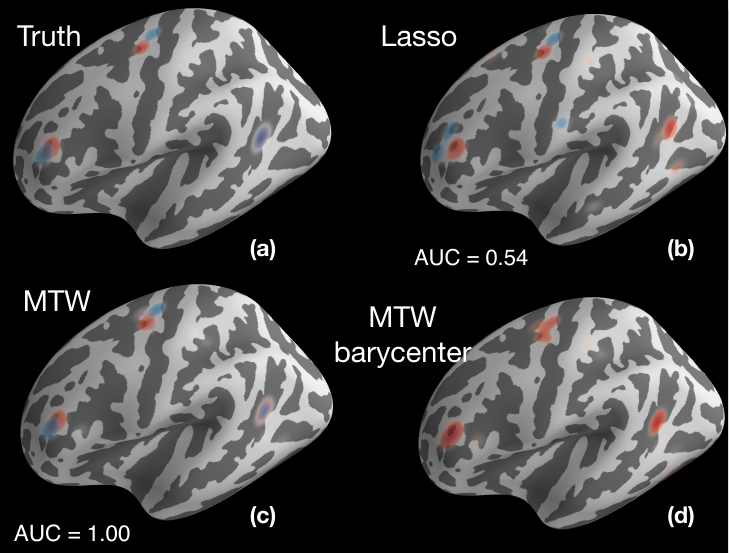Section: New Results
Wasserstein regularization for sparse multi-task regression
We focus in this work on high-dimensional regression problems where each regressor can be associated to a location in a physical space, or more generally a generic geometric space. Such problems often employ sparse priors, which promote models using a small subset of regressors. To increase statistical power, the so-called multi-task techniques were proposed, which consist in the simultaneous estimation of several related models. Combined with sparsity assumptions, it lead to models enforcing the active regressors to be shared across models, thanks to, for instance L1 / Lq norms. We argue in this paper that these techniques fail to leverage the spatial information associated to regressors. Indeed, while sparse priors enforce that only a small subset of variables is used, the assumption that these regressors overlap across all tasks is overly simplistic given the spatial variability observed in real data. In this paper, we propose a convex reg-ularizer for multi-task regression that encodes a more flexible geometry. Our regularizer is based on unbalanced optimal transport (OT) theory, and can take into account a prior geometric knowledge on the regressor variables, without necessarily requiring overlapping supports. We derive an efficient algorithm based on a regularized formulation of OT, which iterates through applications of Sinkhorn's algorithm along with coordinate descent iterations. The performance of our model is demonstrated on regular grids with both synthetic and real datasets as well as complex triangulated geometries of the cortex with an application in neuroimaging.
|
More information can be found in [34].



